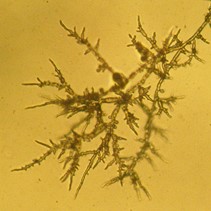
Version 10/23/2019
All testing methods can result in false negatives, i.e., a test that does not detect Phytophthora when it is present. False negative results may arise for a number of reasons. All testing methodologies (e.g., immunoassay [ELISA], culturing, baiting) have limits in sensitivity and are subject to factors that can interfere with the test. The quality, quantity, size, and condition of the sample, as well as the training of the sampler, can also affect whether a pathogen is detected in a sample. Examples of situations that can result in false negative results include:
Because of the potential for false negatives, a single negative test or set of tests conducted on one day should not be considered as definitive and representative of the entire batch of plants or the nursery as a whole. Negative results can be viewed with greater confidence if potential interfering factors have been ruled out, the most suspicious or symptomatic plants are sampled, fungicides have not been applied, and multiple tests conducted over time are all negative. Furthermore, if tested plants were produced under full compliance with the nursery Phytophthora BMPs and the nursery has a history of testing with no Phytophthora detections, negative test results can be viewed with more confidence. Knowing that plants have been produced under a clean process, with close adherence to the nursery Phytophthora BMPs, provides good evidence that Phytophthora infections are very unlikely. Testing by the nursery (as part of the BMPs) and independent pre-delivery testing (by the client or a third party) plays a supporting role to confirm that the clean production process is being effectively implemented. See this link for a full discussion about interpreting bench leachate test results from BMP-compliant and noncompliant nursery stock.
In contrast, even a single positive result is meaningful if the detection comes from a test protocol that does not produce false positives, such as baiting, isolation, and PCR. Baiting and direct isolation result in recovery of the pathogen, indicating that it is viable, whereas PCR detects DNA, which may come from living or dead cells. Currently-available immunoassay tests (e.g., Agdia Phytophthora ELISA test strips) can provide false positives because they cross-react with closely related Pythium and Phytopythium species, which may or may not be pathogenic. Nonetheless, because clean production practices that exclude Phytophthora should also eliminate or minimize Pythium and Phytopythium, a positive ELISA test from symptomatic plant roots in a clean production block is still a cause for concern that should be addressed with Phytophthora-specific testing.